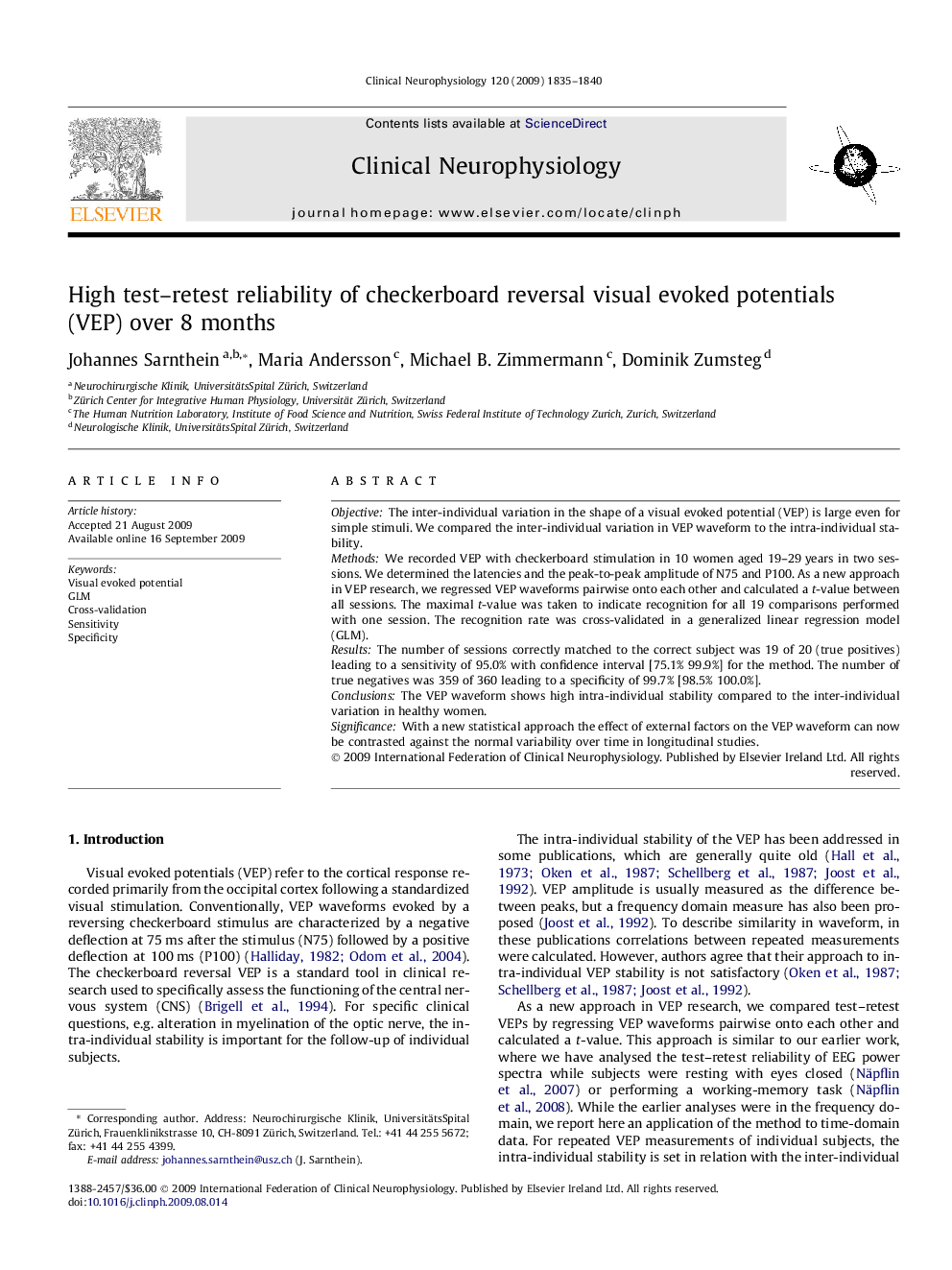| Article ID | Journal | Published Year | Pages | File Type |
|---|---|---|---|---|
| 3046151 | Clinical Neurophysiology | 2009 | 6 Pages |
ObjectiveThe inter-individual variation in the shape of a visual evoked potential (VEP) is large even for simple stimuli. We compared the inter-individual variation in VEP waveform to the intra-individual stability.MethodsWe recorded VEP with checkerboard stimulation in 10 women aged 19–29 years in two sessions. We determined the latencies and the peak-to-peak amplitude of N75 and P100. As a new approach in VEP research, we regressed VEP waveforms pairwise onto each other and calculated a t-value between all sessions. The maximal t-value was taken to indicate recognition for all 19 comparisons performed with one session. The recognition rate was cross-validated in a generalized linear regression model (GLM).ResultsThe number of sessions correctly matched to the correct subject was 19 of 20 (true positives) leading to a sensitivity of 95.0% with confidence interval [75.1% 99.9%] for the method. The number of true negatives was 359 of 360 leading to a specificity of 99.7% [98.5% 100.0%].ConclusionsThe VEP waveform shows high intra-individual stability compared to the inter-individual variation in healthy women.SignificanceWith a new statistical approach the effect of external factors on the VEP waveform can now be contrasted against the normal variability over time in longitudinal studies.
